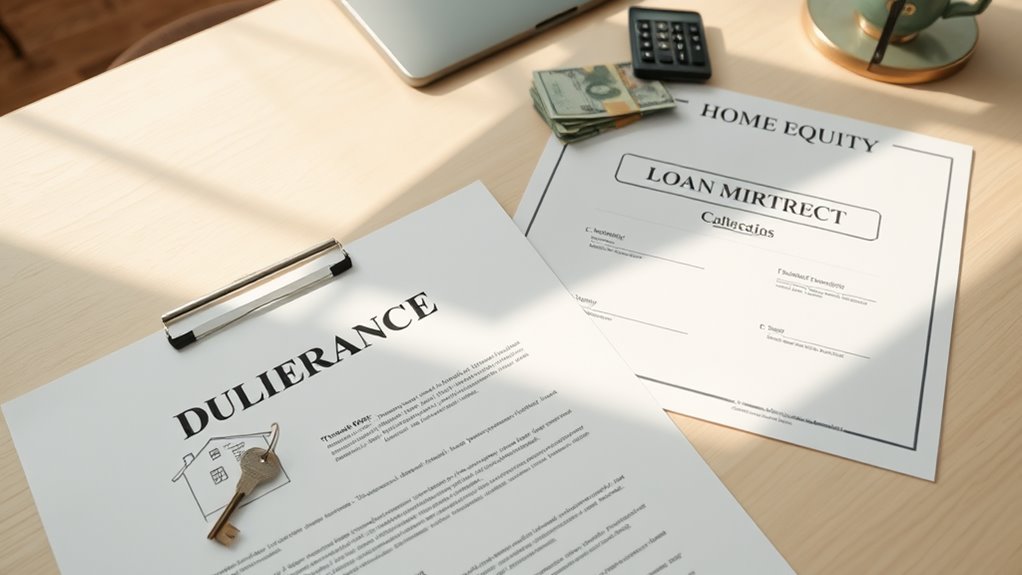A second mortgage is a loan you take against your home’s equity while keeping your primary mortgage in place. It allows you to access funds by using your property as collateral, typically up to 80-90% of your home’s value. You can choose between a lump-sum home equity loan or a flexible HELOC, both with interest rates higher than your first mortgage. Understanding its benefits and risks can help you make informed financial decisions.
Key Takeaways
- A second mortgage is a loan secured against a home that already has a primary mortgage.
- It allows homeowners to access up to 80%-90% of their home equity.
- Two main types are home equity loans (lump sum) and HELOCs (revolving credit line).
- Interest rates are higher than first mortgages but lower than unsecured loans.
- It provides funds for expenses like debt consolidation or home improvements.
What Is a Second Mortgage?
A second mortgage is a loan secured against a property that already has a primary mortgage, enabling homeowners to tap into their accumulated home equity. When you take out a second mortgage, you use your property as collateral, giving lenders assurance that they can recover their funds if you default. You can typically access up to 80% to 90% of your home equity, depending on your property value and lender policies. Second mortgages come in various types of second mortgages, including home equity loans, which provide a lump sum, or a home equity line of credit (HELOC), which offers flexible access to funds. Interest rates on second mortgages are higher than first mortgages but often lower than personal loans or credit cards. Approval requires a solid credit score, usually around 620 or higher. Monthly payments depend on the loan amount, interest rates, and repayment terms.
Second Mortgage vs. Refinancing
When comparing a second mortgage to refinancing, you’ll notice differences in payment structures; a second mortgage requires two separate payments, while refinancing consolidates your debt into a single monthly payment. Second mortgages typically carry higher interest rates than refinancing because they are subordinate to the original mortgage, increasing lender risk. Understanding these distinctions can help you choose the option that best aligns with your financial needs and goals.
Payment Structure Differences
Although both second mortgages and refinancing allow homeowners to leverage home equity, their payment structures differ significantly. With a second mortgage, you’ll maintain your original mortgage and add a new loan, requiring you to manage two separate monthly payments. This dual-payment structure can increase financial strain but provides immediate access to home equity. In contrast, refinancing replaces your original mortgage with a single new loan, consolidating your debt into one monthly payment. This simplifies your payment structure and potentially reduces administrative complexity. While second mortgages often carry higher interest rates due to increased lender risks, refinancing may offer more favorable terms. Understanding these payment structure differences helps you evaluate which option aligns better with your financial goals and capacity to manage monthly obligations.
Interest Rate Comparison
Second mortgages generally come with higher interest rates compared to refinancing options, averaging around 8.43% for home equity loans versus approximately 7.10% for primary mortgages. When you take out a second mortgage, the interest rate charged is often higher because the loan is subordinate to the first mortgage, posing greater risk to lenders. In contrast, refinancing allows you to replace your existing mortgage with a new one at potentially lower rates, consolidating your monthly mortgage payments into a single obligation. Borrowers with a strong credit profile may secure even more favorable terms when they refinance the first mortgage. While second mortgage rates are typically lower than unsecured loans, they still result in higher overall borrowing costs due to the need to maintain separate payments. Choosing between these options depends on your financial goals and creditworthiness.
How Does a Second Mortgage Work?

A second mortgage lets you access your home’s equity, providing funds based on the difference between your property’s value and your first mortgage balance. You can choose between a home equity loan, offering a lump sum with fixed payments, or a HELOC, which operates like a flexible credit line. Repayment typically involves monthly installments covering both principal and interest, potentially with tax-deductible interest under specific conditions.
Home Equity Access
Accessing home equity through a second mortgage enables homeowners to leverage the value they’ve built in their property. Your equity in your home is calculated by subtracting the remaining balance on your first mortgage from the current market value. With a second mortgage, you can typically access up to 80% of this equity, either through a home equity loan, which provides a lump sum, or a home equity line of credit (HELOC), which allows flexible withdrawals. Interest on home equity loans may be tax-deductible if used for investment purposes. To qualify, you’ll need a credit score of around 620 or higher and a debt-to-income ratio below 43%. Monthly payments on a second mortgage are in addition to your primary mortgage, so verify your finances can accommodate this commitment.
| Second Mortgage Type | Key Feature |
|---|---|
| Home Equity Loan | Fixed lump sum payment |
| HELOC | Variable credit line |
Loan Repayment Terms
Once you’ve accessed your home equity through a second mortgage, understanding the repayment terms is key to managing your financial obligations. Loan repayment terms typically span 5 to 30 years, offering flexibility based on your needs. With a fixed-rate second mortgage, you’ll make consistent monthly installments combining principal-and-interest payments until the repayment period ends. Alternatively, home equity lines of credit (HELOCs) often feature variable interest rates, allowing you to borrow as needed while making minimum payments during the draw period. Borrowers must manage payments for both the first and second mortgages, ensuring they stay within the 80% home equity borrowing limit. While monthly obligations can be significant, interest payments may be tax-deductible, potentially easing the financial burden. Carefully review these terms to align your repayment strategy with your long-term goals.
Types of Second Mortgages
Second mortgages come in two primary forms: home equity loans and home equity lines of credit (HELOCs). Home equity loans are secured loans that provide you with a lump sum at a fixed interest rate, which you repay through monthly payments over a set period, typically 5 to 30 years. HELOCs, on the other hand, function more like a revolving credit line, allowing you to draw funds as needed during a specified draw period. During the draw period, you usually pay only interest on the amount borrowed, but once it ends, you must repay both principal and interest. Both options let you access your home equity, often up to 80% of your home’s value minus your first mortgage balance. Interest rates for second mortgages are generally higher than first mortgages but lower than unsecured loans, making them a cost-effective way to borrow.
Pros and Cons of a Second Mortgage

Homeowners considering a second mortgage can leverage their home equity for significant financial needs, but it’s important to weigh the benefits and drawbacks carefully. One advantage is access to substantial funds at lower interest rates than credit cards or personal loans, making it an attractive option for debt consolidation or home improvements. However, second mortgages typically carry higher interest rates than first mortgages, reflecting the increased risk for lenders. You’ll also face additional financial obligations, including monthly payments on both your original and second mortgage, which can strain your budget. Closing costs, such as application and origination fees, further add to the upfront expense. A significant risk is foreclosure if you default on payments, as the second mortgage is subordinate to the first. Carefully assess your ability to meet these obligations to guarantee a second mortgage aligns with your financial goals and stability.
Requirements for a Second Mortgage
Although securing a second mortgage can provide access to needed funds, meeting specific eligibility criteria is vital to qualify. To qualify for a second mortgage, you typically need at least 15% to 20% equity in your home, ensuring the remaining mortgage balance is below 80% to 85% of the property’s value. Lenders also require a minimum credit score of 620, though higher scores may secure better terms. Additionally, you must demonstrate a stable income and maintain a DTI ratio of 43% or lower to meet lender requirements. The application process involves submitting detailed documentation of your income, debts, and assets and may include a home appraisal to verify your property’s value. Be prepared for closing costs, which can include application fees, origination fees, and appraisal expenses, similar to those of a primary mortgage. Meeting these criteria is essential to obtaining a second mortgage successfully.
Conclusion
A second mortgage releases the value tied within your home, much like a key frees a treasure chest. However, tread carefully—its dual-edged nature can either fortify your financial foundation or deepen your burdens. Whether you pursue it to consolidate debt or fund aspirations, guarantee your steps align with a sturdy plan. Like a bridge over turbulent waters, it can guide you forward, provided you navigate with foresight and discipline.




